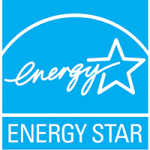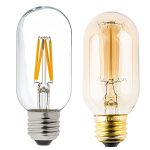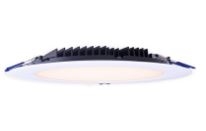Lighting is the most visible user of electricity in your home but is usually the 3rd highest user behind your HVAC and appliances. We’ll discuss some savings opportunities here, but if you want more information on lighting technology visit our LIGHTING 101 page.
It’s only been a few years since LED was commercially available and the prices have dropped while the quality has improved dramatically. LEDs appear to be the best option (with a few exceptions) for efficiency and keeps getting better. Let’s assume LED is the way to go but there are some caveats.
TIME IS MONEY
Upgrade the fixtures that you use the most first and also focus on the lighting that you may use during the day when the price of electricity can be twice the price of off-peak hours. There is little financial sense in replacing closet lights as well because they’re only on for a few minutes a week. If you have any one in your home that tends to forget to turn off lights, then consider a timer or occupancy sensor switch that will turn off after set periods of time so you don’t waste electricity. Timers are great for those who turn on their exterior lighting at night time.
LED lifespan is extremely long as well so if you have lights in a hard to reach location, it might be best to swap them out with an LED and never have to worry about them again. Keep in mind that LED lights are powered by circuits and will have a typical fail rate of about 3%, similar to other consumer electronics. If they do fail, they tend to fail within the first 90 days of installation.
NEW OPTIONS WITH LED
The advent of LED lighting is changing the way that lighting is created and giving new opportunities to put light where it couldn’t previously be placed before. Note to always ensure that you are installing properly rated devices in the appropriate environment:
- Vintage Style Bulbs – Vintage style bulbs have seen a resurgence in the past few years but they tend to use a lot of electricity and produce a small amount of lumens (light). LED versions have increased in quality dramatically and look just as good as the traditional style bulbs. They’re also commercially available in most stores that stock lighting.
- Slim Style Pot Lights – Slim/Puck style pot fixtures have lowered in price dramatically and are extremely easy to install. Their small profile allows them to be installed in almost any location and wiring is typically easy.
LOOK FOR CERTIFICATIONS
There are a lot of LED lighting options in the market and many people attempt to find deals with offshore products. Some of these products do not have adequate certifications in Canada. We always suggest to trust either of two different certifications available for light bulbs or light fixtures:
- ENERGY STAR – This is a trusted certification and is updated regularly. If a product is ENERGY STAR certified it means that it’s been tested independently and is among the highest efficiency products in it’s category. Energy Star can be applied to bulbs and fixtures.
- Look for this symbol –

- Look for this symbol –
- Design Light Consortium (DLC) – This is a specialized certification for LED fixtures (not for bulbs).
- Look for this symbol –

- Look for this symbol –
WHEN NOT TO USE LED
Yes it’s true. There are several occasions where LED is not the best option:
- In Hot Environments – Heat is damaging to the LED drivers so never replace your appliance lights with LEDs unless they are made specifically for that appliance. This includes lights in your range.
- When You Want Heat – In very few occasions, the heat from an inefficient bulb might be needed. Bulbs have been used for heat in some rural applications to ensure that pipes don’t burst in the winter. If you’re want to save a little, then replace the incandescent with a halogen bulb which offers some efficiency gain but also gives off heat.
- In Wet Environments (sort of) – If you replace a bulb in a wet or humid environment ensure that it’s wet-rated.
- Light Sensitive Persons – A very small amount of people can be sensitive to fluorescent and LED lighting. For some, it’s a sensitivity to the blue light spectrum that is a part of LEDs. For some it’s sensitivity to the invisible flicker of a fluorescent bulb (they flicker at a 60Hz frequency). Either is extremely difficult to identify. In these cases the person could live with the discomfort or resort to halogen lighting which is less efficient.

